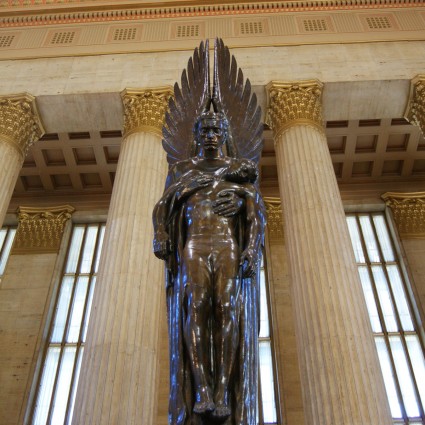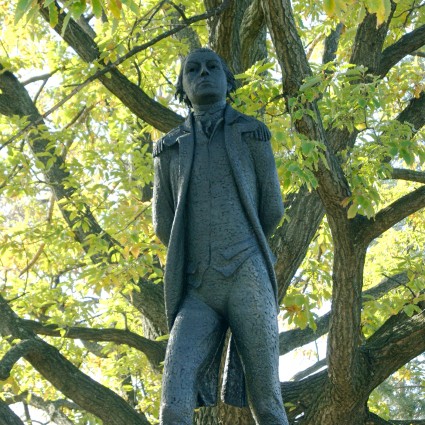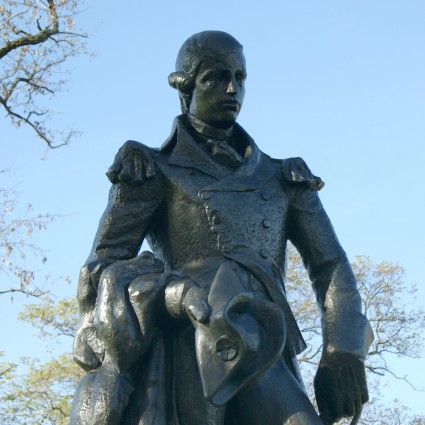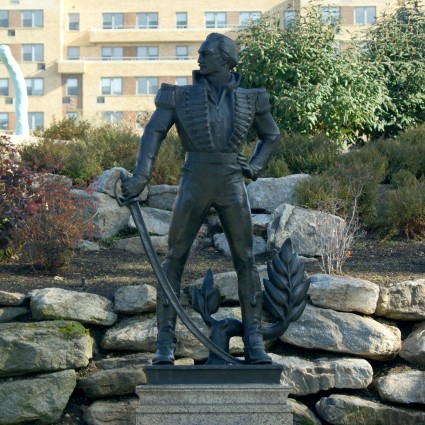At A Glance
Commissioned as part of the William M. Reilly Memorial
John Paul Jones famously said “I have not yet begun to fight” to a British commander during the American Revolutionary War
Artist Walker Hancock was a chairman of the sculpture department at the Pennsylvania Academy of the Fine Arts
Born in Scotland, John Paul Jones commanded a merchant ship at 22, but after killing a sailor during a mutiny he fled to America to escape prosecution.
I have not yet begun to fight. — John Paul Jones
When the American Revolutionary War began, he quickly attained the rank of captain in the Continental navy and became celebrated for raids along the coasts of England and northern Ireland, especially for the 1779 battle in which he captured the British ship Serapis. During this encounter, when the British commander called on the Americans to surrender, Jones supposedly retorted, “I have not yet begun to fight.”
Walker Hanckock is a former chairman of the sculpture department at the Pennsylvania Academy of the Fine Arts. Art historian Beatrice Gilman Proske praised his John Paul Jones commissioned as part of the William M. Reilly Memorial for its “striking impression of the doughty seaman’s character.” Hancock also created the Pennsylvania Railroad War Memorial.
William M. Reilly Memorial
In his will of 1890, General William M. Reilly of the Pennsylvania National Guard established a trust fund for the purpose of creating monuments to Revolutionary War heroes. The earnings were to accumulate until the fund became large enough for the memorial to be realized. In 1938, when the fund reached the necessary level, the trustees set the project in motion, and four bronze statues were installed by 1947. Although Reilly had requested a site near Independence Hall, the larger-than-life figures were placed instead on the terrace northwest of the Art Museum. C. Louis Borie, Jr., one of the architects of the museum itself, designed the granite bases.
As specified in the will, these first four sculptures commemorated Montgomery, Pulaski, von Steuben, and Lafayette, volunteers from other lands who “threw themselves into the cause of emancipating the colonies from the yoke of British tyranny.” In addition to honoring their achievements, General Reilly wrote, the memorial would express “appreciation and gratitude to the lands which gave these liberty-loving men their birth.”
By the terms of the will, funds remaining after the erection of the four original monuments were to be applied to other statues of Revolutionary heroes. Accordingly the trustees commissioned bronze figures of John Paul Jones and Nathanael Greene, which were installed in 1957 and 1961, respectively. The six sculptures are arranged in two facing rows.
Adapted from Public Art in Philadelphia by Penny Balkin Bach (Temple University Press, Philadelphia, 1992).
RESOURCES:



